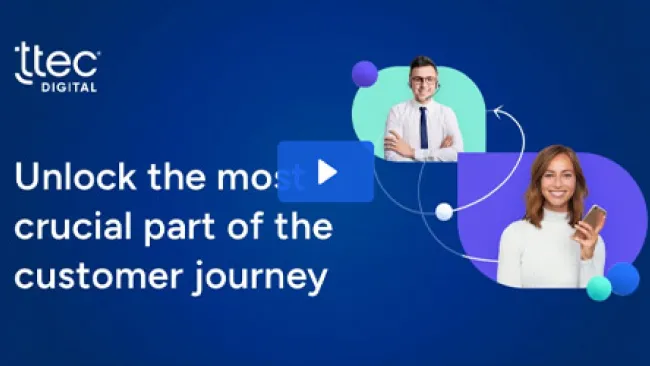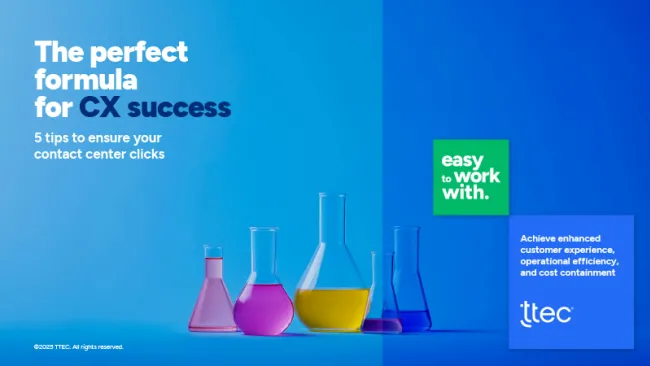Voice of the customer (VOC) programs are a staple of customer strategy programs, put in place to provide companies with the customer perspective of their experiences. And thanks to new technologies and new sources of customer data, VOC programs are maturing to uncover even more actionable insight that benefits customers and the brands they do business with.
"Voice of the customer" is any data captured in the customer’s own words or actions through a variety of formal and informal sources that allow for a deeper understanding of customer intent, interests, preferences, and emotion. The customer’s "voice" is much more than just vocal expression. Customer surveys, feedback forms, voice or text interactions, emails, chat, self-service behavior, online activity, social/online community posts and reactions, and ratings/reviews are all examples of VOC sources that contain valuable customer information.
Writing a new chapter
VOC is not a new concept. But customer executives have struggled to make it a strategic enterprise imperative. It has traditionally been used as a tool to monitor associate compliance and quality assurance. VOC tools haven’t been used to their fullest potential. Even in the age of the customer, Forrester analyst Faith Adams writes that VOC programs are still not taken seriously because "they struggle to drive action and prove value."
Yet VOC can be used to unlock hidden pieces of the customer puzzle in new ways. Contact center interaction analysis via speech or text analytics can identify levels of customer satisfaction, trends, or root causes of issues, along with customer preferences and key drivers of customer behavior.
VOC also gives firms the ability to react more quickly to hot or emerging issues, uncover product issues and unmet customer needs, develop new and expanded product offerings, and create service-to-sales opportunities, just to name a few. The information about what customers are saying and why can also inform personalization, next-best action rules, and other customer journey elements.
In a digital-first world, VOC’s role can expand to be much more significant than it is today as a business unit tool, as can its ability to prove value and ROI. Moving VOC activities up to the enterprise level can help solve organizational challenges.
Too often, especially in large companies, VOC programs are siloed, designed to measure one specific function or gather one set of data. For enterprise success, VOC insight is beginning to be integrated across the business in near-real time with other systems like CRM and ERP, risk and financial models, and other data sources, to create a clearer picture of customers and their relationship with the business. It creates a more robust understanding of the current state of customer interactions, so companies can identify where to make improvements that will have the most impact.
Companies now also realize that not every data point needs to be collected and analyzed, especially if it doesn’t connect to a business need or influence improvements. Progressive companies are using VOC tools to focus on certain customer groups and understand root causes of issues, rather than just store customer data in a repository hoping someone may need it one day. This more narrow focus saves time and resources while providing the most value.
Looking forward, not back
VOC is also often used to gather a finite snapshot of the customer, where decisions are made based on short-term needs or a single objective. But advancements in the speed and depth of analytics and machine learning can now help firms uncover longer-term trends and more macro-level insight.
VOC is increasingly being used as a leading indicator and predictor of future customer behavior and sentiment. For example, VOC can be leveraged in correlation analysis to connect customer words and phrases with a future event. Working back from an event, like customer churn, VOC insights can identify leading phrases and words that indicate a customer is becoming more at risk and allow companies to intervene earlier. We have also found that VOC can mitigate that risk by triggering proactive outreach to customers who report dissatisfaction or a negative experience and, by providing a surprise and delight, turn them into loyal customers.
And one of the most exciting new applications of VOC is the ability to better quantify what had been intangible—emotion. Sentiment based on frequency and intensity of language and other variables combines with emotion analytics to create what we call the CX Vector, which allows firms to predict and model how and why customers will behave in the future based on current emotions, even those that are fleeting.
Executive VOC priorities
Chances are there is at least one VOC program in place at your company. But are your VOC programs optimized? In our work with clients, we recommend the following priorities for executives:
• Don’t fall for the tech only. There are many spectacular VOC tools and fancy visualization programs on the market. But to drive value and results, the business objective must be identified before deploying any technology.
• Break down VOC silos. Expand beyond individual department data and actions to get a more complete customer picture. Engage marketing, service, sales, product, and enterprise teams to determine objectives of VOC programs as well as data sources to integrate.
• Combine VOC with VOE. The voice of the employee (VOE) is a critical component in a business. Pull VOC and customer-facing VOE into one system to create a more holistic understanding of customers and how they do business with your brand.
• Listen over the long term. Track post-VOC activity. What actions were implemented based on the insight created, and what impact did that have on the customer and the business? What other changes may be needed in the short and long term as a result?
• Prioritize VOC activity. Don’t boil the ocean. Determine what may have the biggest impact to the business and focus there. Prominently display and monitor hot alerts and emerging issues—make it easy for the front-line business leaders to see what’s happening to prioritize business objectives.
• Measure wisely. Collect VOC at the both functional and enterprise level, and measure the impact of VOC downstream, particularly to revenue so that you can prioritize and optimize the response to VOC feedback. Connect VOC to other business KPIs, such as customer satisfaction and NPS.
Innovative VOC in action
Customer support volume and associated costs were on the rise for a leading business services provider. The firm needed to transform its data and processing procedures to more swiftly react to and pre empt customer problems.
We worked with the company on a call deflection program rooted in VOC. First, utilizing guided text analytics, we examined millions of unstructured phone logs to determine the root causes of the high volume of inbound calls. We developed an actionable system of categories and sub-categories to classify and quantify customer issues. These included adding correct codes, running reports, and identifying challenges presented by product functionality. We then integrated the robust call interaction detail with customer-level information in a cloud-based reporting platform to disseminate call type and volume trends.
With a deeper understanding of customer issues, the company more swiftly and effectively deployed call deflection initiatives and strategies like product enhancements, self-service options, updates to documentation and training, and revisions to FAQs.
As a result, the company estimates call reduction of up to 15 percent per year over the next three years, equating to tens of millions of dollars in cost savings. The identification of types of problems experienced by customers and the resulting actions have improved the customer satisfaction and retention levels.
Conclusion
These are just some of the ways to take a new look at VOC to give customers a literal say in the experiences they have with your brand. The voice of your customers can’t be copied by competitors, so the more you can leverage it to improve operations and experiences, the stronger the bond between you and your customers will be.

















